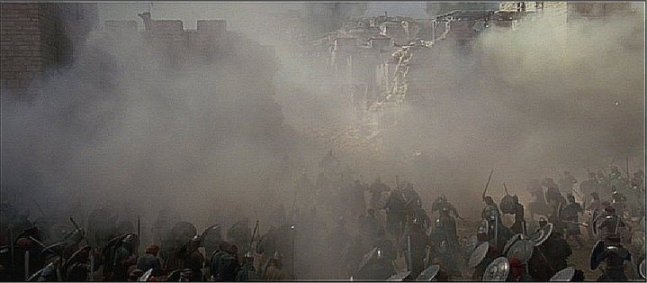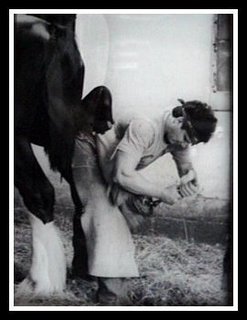Begining to Read Scripture

In a previous post entitled Truth I received some comments about scripture that I thought best addressed by a separate post. In one of my replies I said that the problems that people get into with scripture are often because they fail to take each verse in the context of the whole work.
Let me ask you: what church congregation, when preaching morals from scripture, takes a verse in its entire context? None. It would be impossible, the context is more than 2000 pages.
Then there is the problem of translation errors (hate your family to follow Jesus?), of course, and seemingly contradictory verses which take bend-over-backwards apologetics to harmonize.
There are more than a few churches that do preach the Bible in its whole context. It is a work that should be viewed as any other piece of literature. It has an opening and a conclusion. It uses common literary devises such as allegory, narrative, symbolism and poetry. Instructors of lit classes try to get students to find symbolism, allegory and example in mundane narrative. When sacred text is concerned people seem to forget that, and just want an either/or, rather than the normal combination. To put these in order it is first required to understand the purpose of the book.
In the opening is the creation narrative. Whether one takes it as an allegorical account or literal description is not as essential as finding the purpose statement that serves as the basis of the rest of the work.
So the LORD God said to the serpent,... And I will put enmity between you and the woman, and between your offspring [a] and hers; he will crush [b] your head, and you will strike his heel." ...To Adam he said, "Because you listened to your wife and ate from the tree about which I commanded you, 'You must not eat of it,' "Cursed is the ground because of you through painful toil you will eat of it all the days of your life. ... The LORD God made garments of skin for Adam and his wife and clothed them. Genesis 3
This is the synopsis of what the rest of the work is about. Adam's choice caused God to end the innocence of creation. The serpent's (Satan) assault on man will continue with some success only to be defeated by the child of a womam (the incarnation). The covering for the nakedness of transgression against God is blood sacrifice (the animal skins used to make clothing).
There is another creation reference that sheds additional light on the purpose of the book.
For by him all things were created: things in heaven and on earth, visible and invisible, whether thrones or powers or rulers or authorities; all things were created by him and for him. Colossians 1:16
The premise is the systematic unfolding of how God will return the innocence of creation by His own example and sacrifice for His own pleasure by His word also known as His Son. The casual reader can find principles for living, the scholar a satisfaction in understanding the nuance of God's revelation.
Two references were offered as exaples of difficulties in understanding when to be literal.
"If your hand causes you to sin, cut it off. It is better for you to enter life maimed than with two hands to go into hell, where the fire never goes out. And if your foot causes you to sin, cut it off. It is better for you to enter life crippled than to have two feet and be thrown into hell. And if your eye causes you to sin, pluck it out. It is better for you to enter the kingdom of God with one eye than to have two eyes and be thrown into hell."
-Mark 9:43
This is a use of hyperbole to bring home the importance of moral behavior and an eternal outlook in the eyes of God
"Then God said, 'Take your son, your only son, Isaac, whom you love, and go to the region of Moriah. Sacrifice him there as a burnt offering on one of the mountains I will tell you about.'"
-Genesis 21:2
This is God demonstrating to and through his follower Abraham how he is going to redeem the world. The sacrifice of Abraham's son interrupted by God so a surrogate could take his place is clearly pointing to Jesus and the intervening sacrificial system leading up to his birth. The mountain Abraham was led to was eventually known as Golgotha, the hill of the crusifiction.
Christian Carnival 113—The Innovation Edition








 BlogHop.com
BlogHop.com







2 Comments:
|Sorry, I missed this post somehow.
Your interpretations are interesting and seem valid, but I don't think they are the only possible interpretations. You say that we can use the same interpretation techniques for the Bible that we use for mundane literature, but in my experience any literature professor will tell you that any text can have multiple valid interpretations.
Those examples I gave were not supposed to be examples of parts of the Bible that are hard to interpret, they are examples of the danger of mainstream Christian moral decision-making.
In mundane as well as sacred text there is room in many aspects of the work for varied interpretation. There are also essential elements that must be understood or none of the rest make any sense. While the interpretation of the opening theme can be viewed as literal or allegory it is essential to understand the creation, fall and redemption purpose or the rest of the Bible becomes too complicated to make sense.
There are many examples of groups formed around misuse of portions of scripture. That is why one cannot take everyone at face value who claims the title of Christian, but that is true of any philosophy whether secular or sectarian. look at the terms Liberal and Conservative for example. There are constant battles within each group as to who is the real representative of the name. The Bible has been preserved precisely to be the standard by which those that claim adherence to Christ are measured.
Post a Comment
<< Home